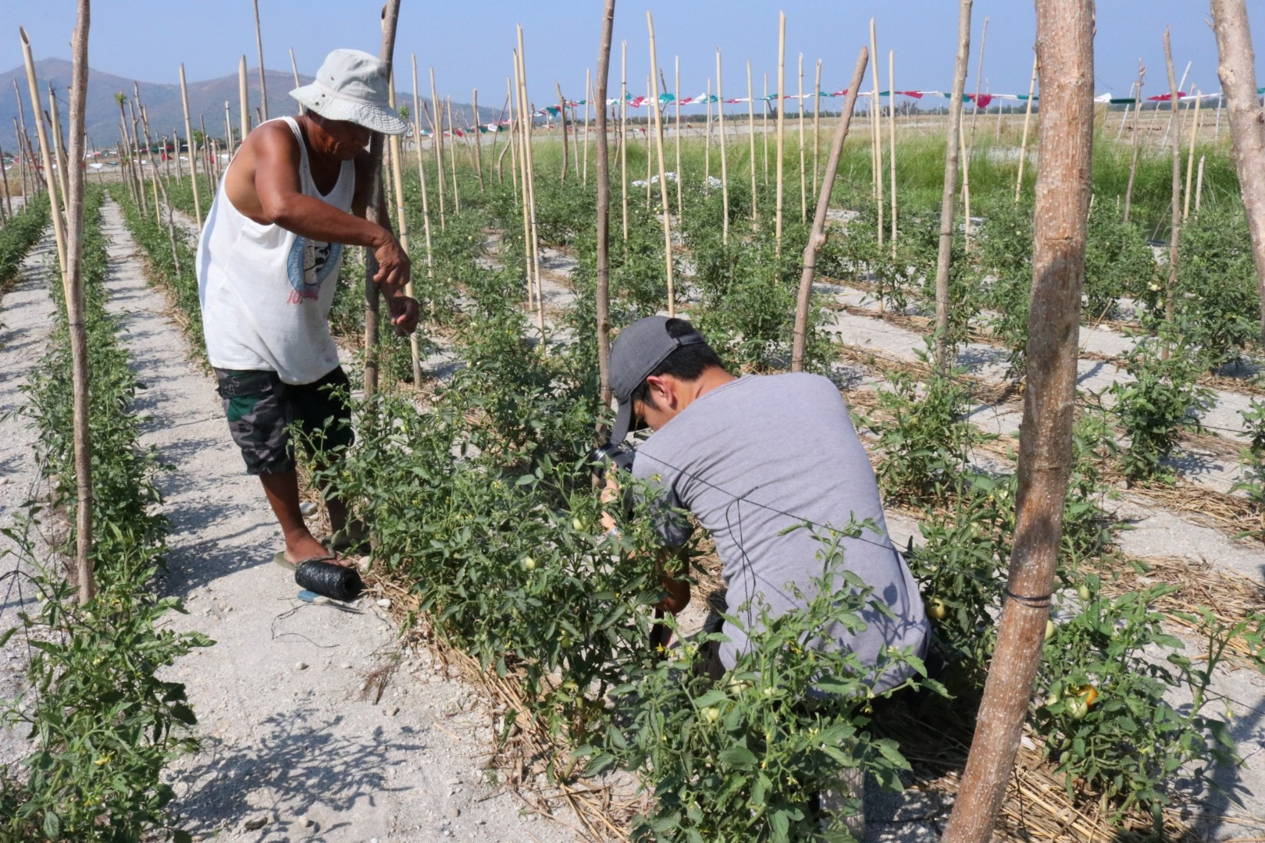
Tomato field in Brgy. San Juan, Botolan, part of the project site
Researchers from the Central Luzon State University has helped farmers from nine (9) lahar-laden barangays in Zambales find suitable crops for their land through research and development.
Funded by DOST-Philippine Council for Industry, Energy and Emerging Technology Research and Development (PCIEERD), the project aims to help in the rehabilitation of areas affected by Mt. Pinatubo in Zambales through science and technology based agricultural production technologies that enhance the productivity of the lahar-laden areas.
The research team assisted the improvement of four barangays in Botolan, Zambales, two barangays in Castillejos, Zambales, and three barangays in San Marcelino, Zambales, all affected by the Mt. Pinatubo eruption in 1991.
Farming households in the four barangays of Botolan, Zambales took part in the study to get an overview of their present farming system where in soil and farm resources were assessed. The soil was analyzed with the help of experts from the University of the Philippines National Institute of Geological Sciences (UP NIGS).
On-farm testing and pilot testing of the production of selected crops were conducted to evaluate and showcase their productivity.
The research team planted tomato, eggplant, sweet potato, green corn, soybean, and peanuts in two demo farms built within the four barangays of Botolan, Zambales. This was replicated in the other barangays in Castillejos and San Marcelino.
The researchers learned that the combined application of organic, inorganic and foliar fertilizer across locations and all kinds of crop produced better yield than the combined application of only organic and inorganic fertilizer.
Eggplant and soybean were also planted in pots of lahar soil and lahar soil where black sand was removed. It was found that the presence of black sand did not influence the performance of eggplant and soybean, and that yield increased when organic fertilizer application was increased.
The researchers identified potential crops and farming practices better suited to the areas including apt technologies.
Technology demonstration (techno-demo) farms were established to showcase the technology developed in Botolan for crop production. These farms were planted with various vegetables such as Diamante Max F1 Hybrid Tomato, Prolifica F1 Hybrid Eggplant, and F1 Hybrid Hot Pepper.
A total of 63 farmers and technicians from local government units (LGUs) were trained and a manual on crop production practices in ash-laded areas was developed to guide them.
The team also came up with two research papers already submitted for publication, and a 2-year off-shoot project was also approved starting this year, with P3 million funding assistance from the Department of Agriculture Regional Office III (DARFO3). This new project will focus on increasing the income of farms through promotion and adoption of
appropriate technologies.
DOST PCIEERD Executive Director Dr. Enrico Paringit sees the results of the project as a boost food security in the region especially with the scarcity of resources.
“We hope that this intervention can help our farmers in lahar-laden areas build back their lives better through innovations in agriculture. We are optimistic that this can help our farmers provide food for their families and to the nation,” he said.
Paringit also enjoined industry players, agricultural groups, and other key stakeholders to engage with the council and help bring this technology to a wider populace.
“As leader and partner in enabling innovations, we hope that our industry players can help us reach more people. We will be relentless in our pursuit of finding solutions and opportunities that can plant the seeds of innovation in our nation,” he said.




